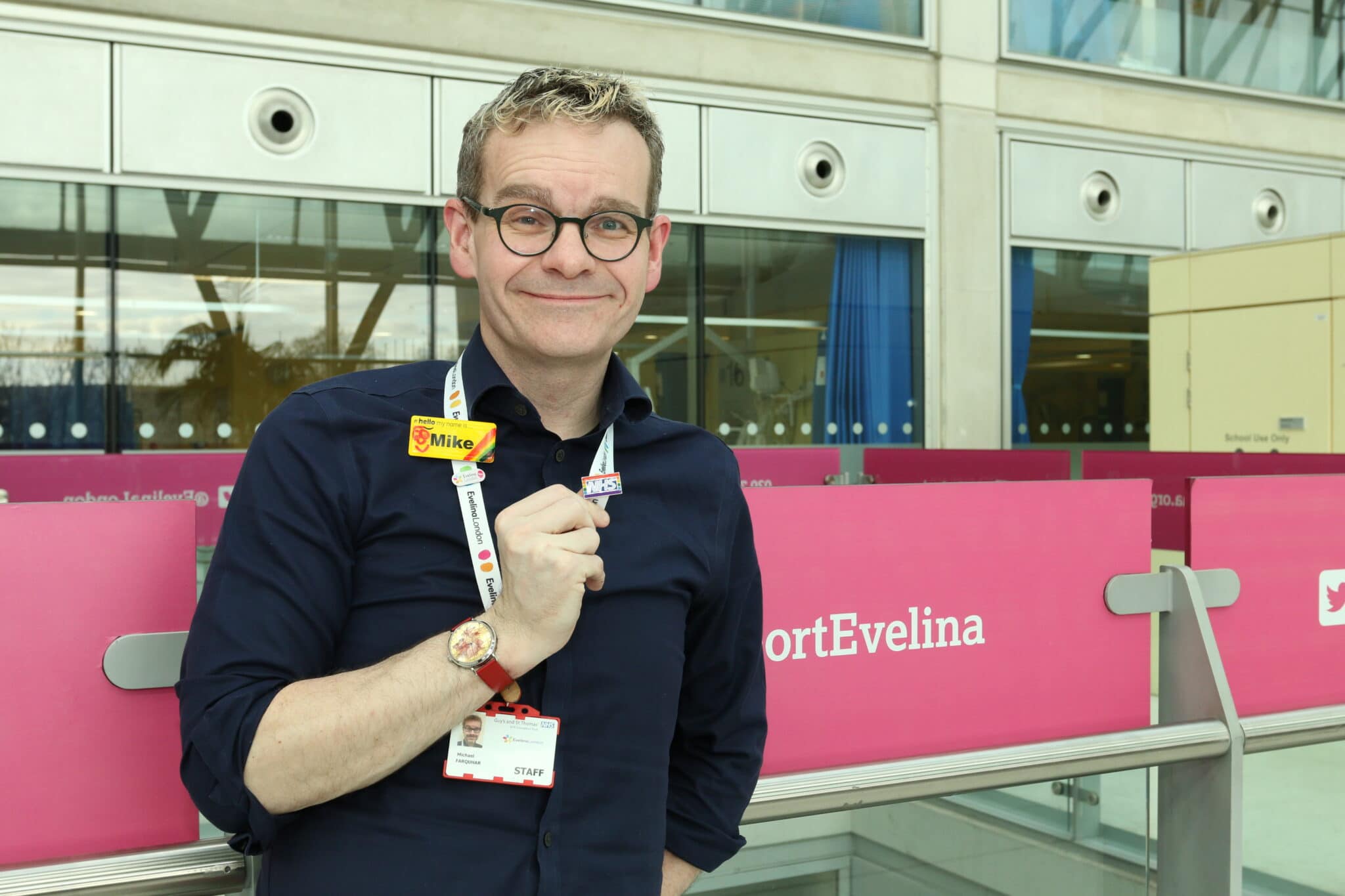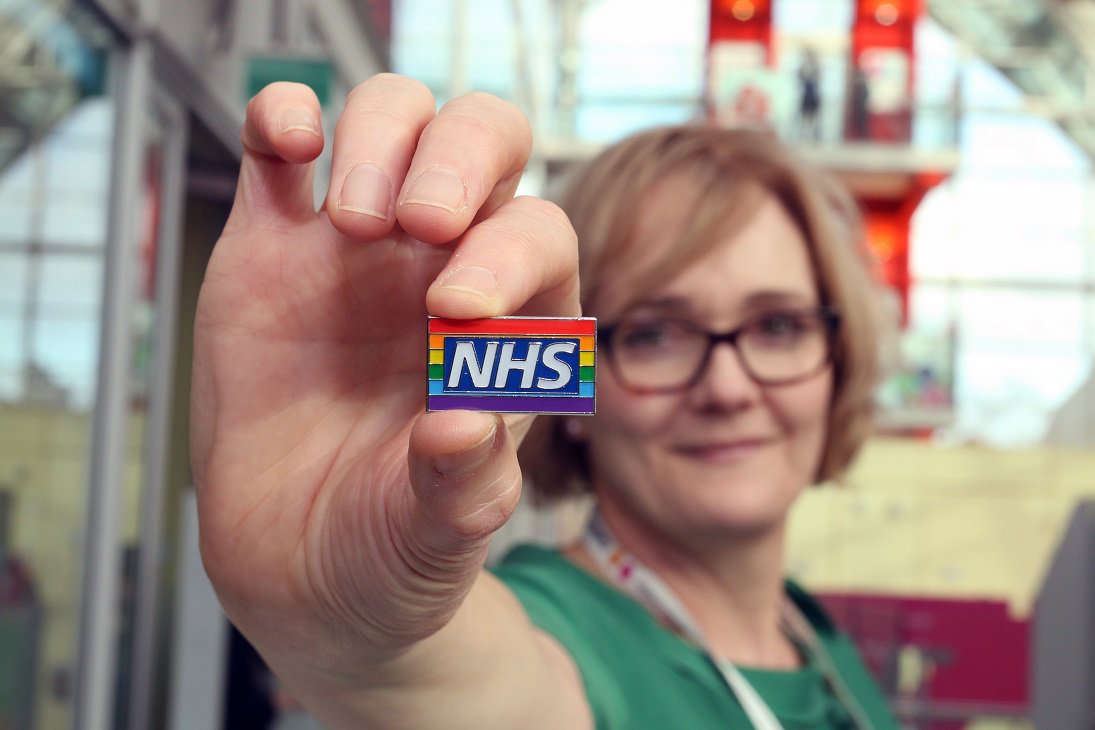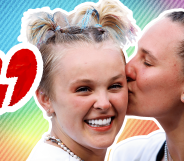The unlikely beginnings of the ‘radical’ rainbow NHS badge – and why LGBT+ allyship is still sorely needed in healthcare
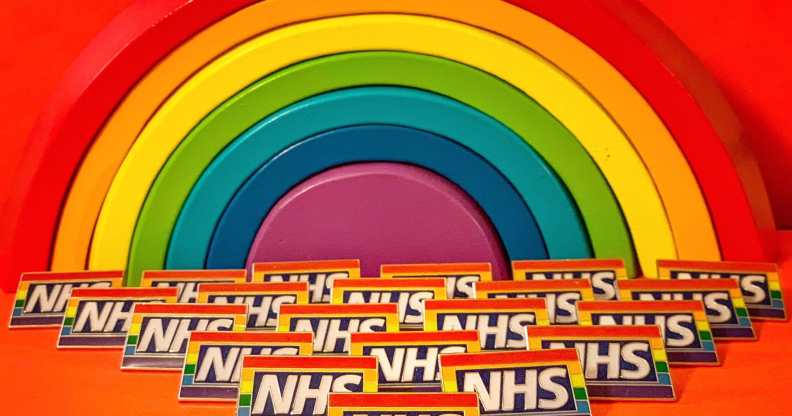
The rainbow NHS badge is now a familiar sight in UK hospitals (Twitter/@RainbowNHSBadge)
The rainbow NHS badge is now a familiar sight in UK hospitals (Twitter/@RainbowNHSBadge)
As far as symbols go, there are few more powerful than the Pride flag – but the iconic blue and white lettering of the NHS certainly comes close.
Combine them together on a little enamel badge and the message of inclusion is instantly clear: so unmistakable it’s become ubiquitous in healthcare settings, on lanyards and lapels across the country, even on Casualty and Holby City.
So it’s hard to believe it all began as a tiny “guerrilla project” that didn’t even have the official backing of the NHS.
The kids are not alright
It was 2018, and Dr Mike Farquhar was noticing a disconnect with some of his straight colleagues.
As a paediatrician, he knew how intimidating hospitals can be for young people; as a gay man, he knew that being queer adds a whole other dimension to that.
His hospital, Evelina London, had long held LGBT+ inclusion as one of its core values – but when it came down to it, many staff didn’t fully understand why it was needed.
“I was very aware of this common perception amongst straight people that things are a lot better now,” he told PinkNews. “People look back to the ’80s and ’90s and say, ‘Oh, yeah, it was terrible then. But LGBT+ people have it sorted now. You’ve got equal marriage, everything’s much better.’
“But actually, when we look at the data, we know the lived experience of LGBT+ people is still fraught with difficulties. And when you look at children and young people in particular, it’s still pretty tough.”
Bullying, family rejection, poor mental health and homelessness often leave queer youth feeling desperate, isolated and alone, causing significantly higher rates of suicide, self-harm and drug abuse.
These mental and physical inequities only increase over time as prejudice and improper training create discrimination in healthcare settings, leading to fewer doctors’ visits and poorer health outcomes.
Dr Farquhar knew from experience that these early barriers to healthcare can be devastating.
“I’m looking around at my straight colleagues and thinking, ‘If they’re dealing with young LGBT+ people, they’re probably thinking it’s all fine,’ and I was going, ‘Well, actually, I know it’s not fine,'” he recalled.
“The whole point of this project was to bridge that gap. It can’t just be a small number of LGBT+ doctors and nurses and healthcare practitioners addressing this – we have to make sure that everybody’s aware of it.”
A little badge with a big message
The idea came from a conversation with friends: What if there was a way to send a strong but subtle message to LGBT+ patients?
“At the beginning, it wasn’t about people being the complete solution for every problem,” Farquhar explained.
“It was about saying, ‘I am a good person for you to talk to about your needs, I’m not going to be judgmental, I’m going to take it on board. And if I can’t solve it, I’ll work out how we can help you solve it.'”
After a bad day at work he bit the bullet and ordered a few hundred badges. He only distributed them locally, thinking it would go no further – but word spread fast online.
Though it started with LGBT+ youth, it soon became clear this badge was needed for all ages: the trans man misgendered by his GP, the HIV-positive woman afraid to get tested, the non-binary person alienated by cervical screenings, the lesbian seeking fertility treatment.
Oh my God, what have we done?
“Really quickly we saw this was something that people wanted to engage with,” he said. “They got the concept, they understood why it mattered, and they wanted to be part of it.
“It really did run away at the beginning. We went from 300 badges to quarter of a million in about a year and a half, I think. And when something takes off that quickly, it feels brilliant. You think, ‘This is amazing!’ But there’s a little bit of you that goes, ‘Oh my God, what have we done?'”
Which, coincidentally, is what NHS bosses said when they found out.
Hitting the brakes
As Dr Farquhar belatedly learned, the NHS logo is a trademark owned by the secretary of state – and in using it without permission he was breaking copyright law.
By this point the badge was worn by hundreds of staff in 75 per cent of NHS Trusts. Until now he’d been distributing them under the radar, but he was rapidly ordered to hit pause before it went any further.
Fortunately, the senior executive of Evelina London could see the idea was a “no brainer,” and before long they resolved to bring the badges back into the fold.
This time Farquhar had the full support of Guys and St Thomas’ NHS Trust and the NHS comms team – and a big boost from Strictly Come Dancing‘s Dr Ranj, whose TV connections got the badge onto Casualty and Holby City.
At the time it felt quite radical.
“At the time it felt quite radical, which seems ridiculous in hindsight, but I remember [Mike’s] sheer passion and determination to make it work. He had my unwavering support from then,” he said.
“I knew it was going to be something very special, but had no idea that this little badge which started life at Evelina London was going to become a symbol of compassion and understanding for so many.”
Guy’s and St Thomas’ Charity funded an even bigger roll out, and with it came a pledge that acknowledged the duty of care in wearing the badge.
“One of the dangers is that if somebody is just wearing it as lip service, if they make a mistake that isn’t acknowledged that makes things even worse,” Dr Farquhar said.
“So we took a few months to really think about the model, making clear there had to be this high level of personal responsibility in wearing it. It can’t just be a piece of pretty bling that ends up on someone’s lanyard and means nothing.”
In signing the pledge, staff were directed to a range of LGBT+ resources; they had to understand why the badge is needed, the importance of inclusive language and the need for affirming care.
I didn’t understand how much I was holding my breath all the time
“The stories that we got back, both from staff and patients, are I think a really big part of this,” Farquhar said.
“Very soon after people started wearing the badges I was getting messages saying, ‘I suddenly seem to be having conversations that I wouldn’t have had before.’
“One of the most striking ones was from a lesbian in her late 40s who’d worked in the NHS all her life. As it happened she had to come to our hospital for a surgical procedure.
“She messaged me afterwards to say, ‘The nurse had one of these badges on, and I knew it all in my head… but until I was actually being looked after by somebody with one of the badges, I didn’t understand how much I always held in, how much I was holding my breath all the time.'”
Who ‘owns’ the rainbow?
Not all feedback has been positive, though. The humble badges have since been dragged into debates around the appropriation of Pride, the meaning behind the rainbow and who’s “allowed” to lay claim to it.
The issue became particularly heated as the UK went into lockdown last year and children began displaying rainbows in their windows to support NHS workers.
It wasn’t long before the rainbow became synonymous with the NHS, appearing on everything from banners and buses to pizzas and tote bags, prompting fears people were co-opting Pride imagery and erasing LGBT+ history.
The furore put Farquhar and his colleagues into a difficult position. “I was getting people contacting me going, ‘What do you feel about rainbows being stolen?'” he remembers.
“There was a lot of interest in some areas of the media about forcing things into a binary, one-person-against-the-other battle, and I think it’s corrosive, actually.”
Nevertheless, he realised there was a “delicate” balance to strike. On the one hand, the rainbows seemed a harmless way to show solidarity with the NHS – but on the other, the blurred lines threatened to undermine the badges. Did the wearers support LGBT+ people or just the NHS?
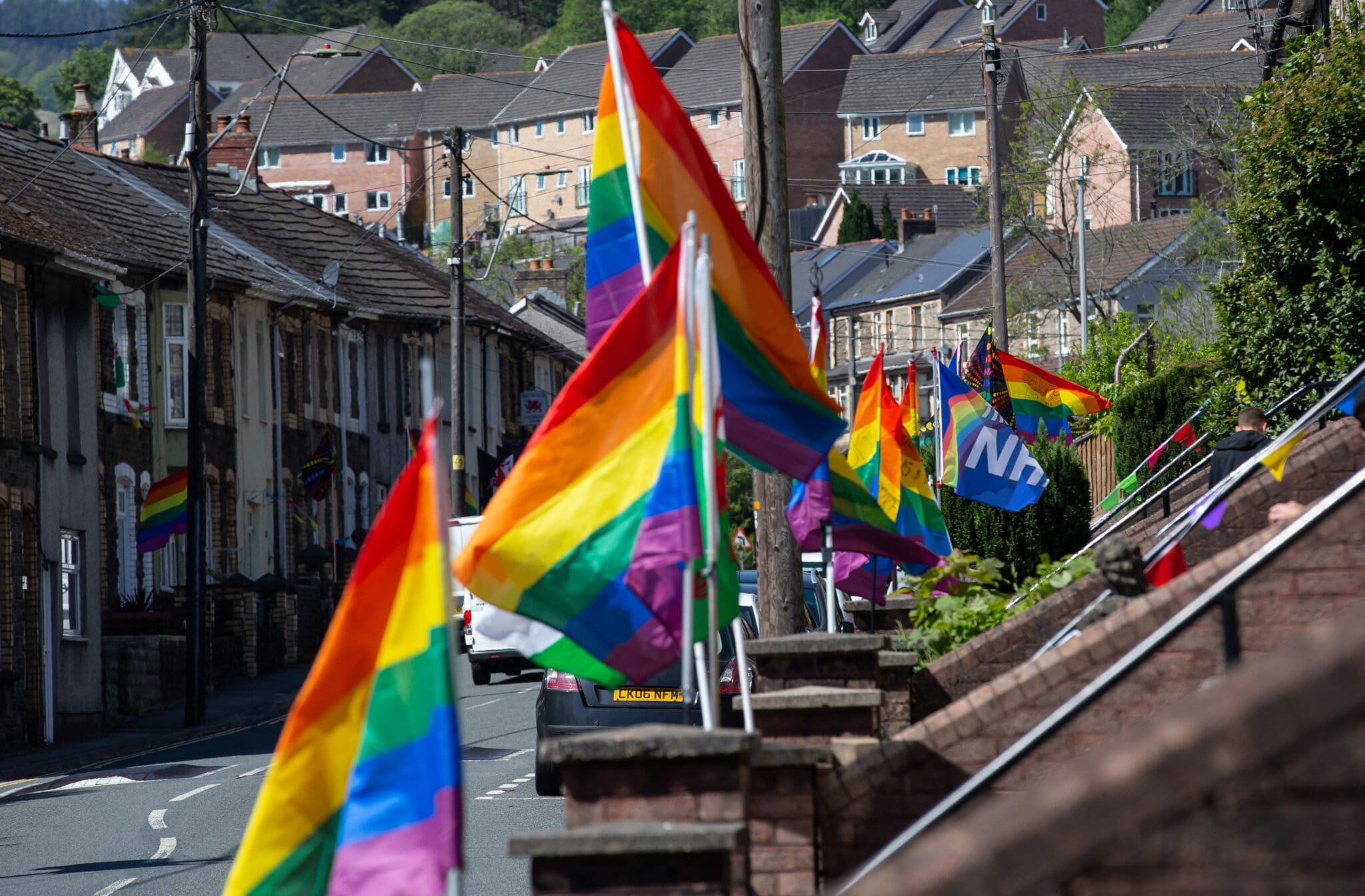
A village in Wales decorates houses with rainbow flags to support the NHS – not Pride (Huw Fairclough/Getty)
Rather than get dragged into the toxicity, Farquhar saw a chance for some re-education.
“We took the opportunity to do a refresher on the whole rainbow NHS badge principle, along with the history of the Pride flag,” he said.
“We said we need to be really careful that in an NHS environment, we use the seven-colour rainbow arch to say thank you to the NHS. And if we talk about things to support LGBT+ people, we use the six-coloured Pride flag.”
It wasn’t the first time the badges had been tested – back in 2019 a transphobic minority of Mumsnet users tried to label them as “anti-female” – but it has highlighted the need to evolve and respond to the LGBT+ community.
With this in mind the badges will use the Progress Pride flag in future, and soon they’ll be taken to another level altogether.
This year the initiative has been taken over by NHS England, who are building on its success to develop a way of grading NHS Trusts on their LGBT+ inclusion.
In partnership with Stonewall, LGBT Foundation and Switchboard, phase two will review hospitals using a bronze, silver and gold tier model to ensure they’re actually implementing the inclusive training the badges stand for.
“I’m always slightly taken aback by how far it’s come,” Dr Farquhar says.
Had he known how quickly the project would take on a life of its own, he might’ve approached it differently – but with an organisation as huge as the NHS, often unconventional methods are needed to enact real change.
“Would I be brave enough to do it all again?” he asks himself. “I’m not sure… But I think sometimes you just need to do something, and then see what happens.”
